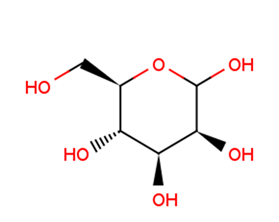
D-Mannose
CAS No. 3458-28-4
D-Mannose( D-(+)-Mannose )
Catalog No. M19599 CAS No. 3458-28-4
D-Mannose is a carbohydrate which plays an important role in human metabolism especially in the glycosylation of specific proteins.
Purity : >98% (HPLC)
 COA
COA
 Datasheet
Datasheet
 HNMR
HNMR
 HPLC
HPLC
 MSDS
MSDS
 Handing Instructions
Handing Instructions
| Size | Price / USD | Stock | Quantity |
| 50MG | 27 | In Stock |


|
| 100MG | 35 | In Stock |


|
| 1G | 120 | In Stock |


|
Biological Information
-
Product NameD-Mannose
-
NoteResearch use only, not for human use.
-
Brief DescriptionD-Mannose is a carbohydrate which plays an important role in human metabolism especially in the glycosylation of specific proteins.
-
DescriptionD-Mannose is a carbohydrate which plays an important role in human metabolism especially in the glycosylation of specific proteins.
-
In VitroRT-PCRCell Line:BMDMs Concentration:5.5, 11, 25 mM Incubation Time:24 h Result:Decreased LPS-induced Il1b gene expression dose-dependently
-
In VivoAnimal Model:C57BL/6 mice Dosage:20% (w/v)Administration:i.g. pre-treated for 2 weeks Result:Opposed loss of body weight induced by DSS and delayed colitis progression.
-
SynonymsD-(+)-Mannose
-
PathwayProteasome/Ubiquitin
-
TargetEndogenous Metabolite
-
RecptorEndogenous Metabolite
-
Research AreaInfection
-
IndicationUrinary Tract Infections
Chemical Information
-
CAS Number3458-28-4
-
Formula Weight180.16
-
Molecular FormulaC6H12O6
-
Purity>98% (HPLC)
-
SolubilityDMSO: 10 mM;Water: 50 mg/mL
-
SMILESOC[C@H]1OC(O)[C@@H](O)[C@@H](O)[C@@H]1O
-
Chemical Name——
Shipping & Storage Information
-
Storage(-20℃)
-
ShippingWith Ice Pack
-
Stability≥ 2 years
Reference
1.Genovese C et al. Effects of a new combination of plant extracts plus d-mannose for the management of uncomplicated recurrent urinary tract infections. J Chemother. 2018 Apr;30(2):107-114.
molnova catalog



related products
-
Oxaloacetic acid
Oxaloacetic acid also known as oxosuccinic acid or oxalacetic acid is a four-carbon dicarboxylic acid appearing as an intermediate of the citric acid cycle.
-
(S)-3-Hydroxybutanoi...
(S)-3-Hydroxybutyric acid is a normal human metabolite that has been found elevated in geriatric patients remitting from depression.
-
Butyric acid
Butyric acid is a fatty acid isolated from many dairy products that exhibits anticancer activity. Butyric acid inhibits histone deacetylases (HDACs) and induces apoptosis and G1 phase cell cycle arrest in glioma cells.



 Cart
Cart
 sales@molnova.com
sales@molnova.com


